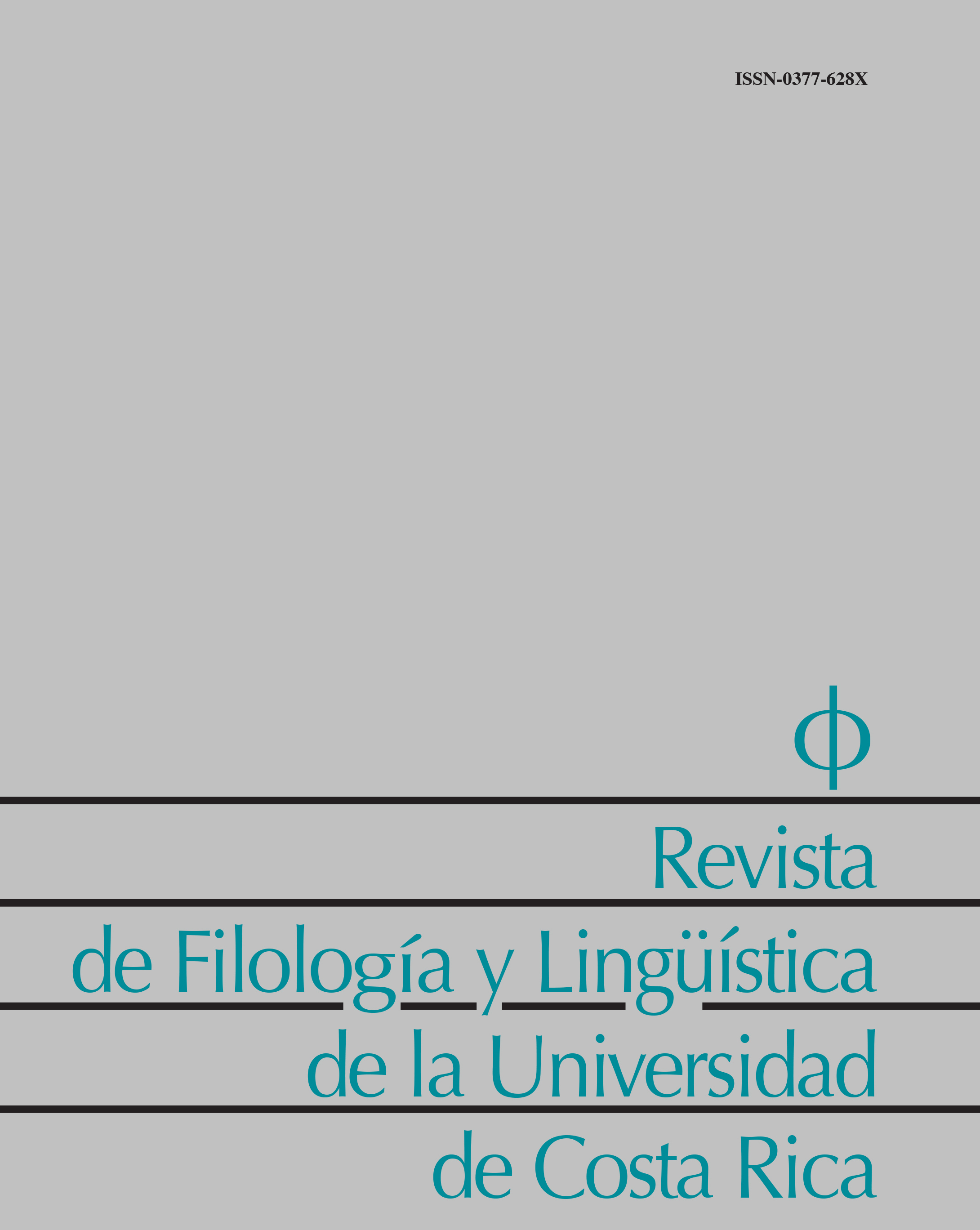Abstract
This article describes a study on the teaching of idiomatic expressions, idioms, or figures of speech such as ser un cero a la izquierda in an intermediate-level Spanish foreign language class. Using as a point of departure the recommendations of various authors (Irujo, 1986b; Liontas, 2003; Tran, 2012) to incorporate idiomatic expressions into foreign language classes, this study investigates a pedagogic approach which until now has not received much attention: the use of idioms as a mnemonic resource in learning grammar. With this in mind, didactic materials were prepared following those used by Zyzik (2010) and Zyzik & Marqués-Pascual (in press) for the explicit teaching of the semantic distinction between ser and estar. Two pedagogic approaches were compared using these materials: one that presented the semantic distinction and was followed by input/output activities and the other via teaching idiomatic expressions. The results indicated that the instruction of idioms is not necessarily better than other teaching methods, but it certainly is a viable way to practice grammar while simultaneously exposing students to idiomatic language.
References
Boers, F. (2000). Metaphor awareness and vocabulary retention. Applied Linguistics. 21 (4), 553-571.
Boers, F., Eyckmans, J. y Stengers, H. (2007). Presenting figurative idioms with a touch of etymology: More than mere mnemonics? Language Teaching Research. 11 (1), 43-62.
Boers, F., Lindstromberg, S., y Webb, S. (2014). Further evidence of the comparative memorability of alliterative expressions in second language learning. RELC Journal. 45 (1), 85-99.
Cooper, T. C. (1998). Teaching Idioms. Foreign Language Annals. 31, 255-266.
Cooper, T. C. (1999). Processing of idioms by L2 learners of english. TESOL Quarterly. 33 (2), 233-262.
Cornell, A. (1999). Idioms: An approach to identifying major pitfalls for learners. IRAL. 37 (1), 1-22.
Ellis, N. C., Simpson-Vlach, R., y Maynard, C. (2008). Formulaic language in native and second language speakers: Psycholinguistics, corpus linguistics, and TESOL. TESOL Quarterly. 42 (3), 375-396.
Ellis, R. (2005). Principles of Instructed Language Learning. System. 33, 209-234.
Geeslin, K. (2000). A New Approach to the Second Language Acquisition of Copula Choice in Spanish. Por R. Leow y C. Sanz. (Eds.). Spanish Applied Linguistics at the Turn of the Millennium: Papers from the 1999 Conference on the L1 & L2 Acquisition of Spanish and Portuguese. (50–66). Somerville, MA: Cascadilla Press.
Geeslin, K. L. (2014). The Acquisition of the Copula Contrast in Second Language Spanish. Por K. L. Geeslin (Ed.). The Handbook of Spanish Second Language Acquisition. (219-234). West Sussex, UK: Wiley-Blackwell.
Guntermann, G. (1992). An Analysis of Interlanguage Development over Time: Part II, Ser and Estar. Hispania. 75, 1294-1303.
Irujo, S. (1986a). Don’t put your leg in your mouth: Transfer in the acquisition of idioms in a second language. TESOL Quarterly. 20 (2), 287-304.
Irujo, S. (1986b). A piece of cake: Learning and teaching idioms. English Language Teaching Journal. 40 (3), 236-242.
Lindstromberg, S. y Boers, F. (2008). The mnemonic effect of noticing alliteration in lexical chunks. Applied Linguistics. 29 (2), 200-222.
Liontas, J. I. (1999). Developing a pragmatic methodology of idiomaticity: The comprehension and interpretation of SL vivid phrasal idioms during reading. (Tesis doctoral). University of Arizona. http://arizona.openrepository.com/arizona/handle/10150/284736
[Consulta 28 de abril de 2015].
Liontas, J. I. (2003). Killing two birds with one stone: Understanding spanish VP idioms in and out of context. Hispania. 86 (2), 289-301.
Marqués-Pascual, L. y Zyzik, E. (2012). Implicit and explicit instruction and the acquisitions of ser and estar. Ponencia presentada en American Council of Teachers of Foreign Languages, Annual Convention. Philadelphia (PA), EE.UU.
Ryan, J., y Lafford, B. (1992). Acquisition of Lexical Meaning in a Study Abroad Environment: Ser and Estar and the Granada Experience. Hispania. 75, 714-722.
Sugano, M. Z. (1981). The idiom in spanish language teaching. The Modern Language Journal. 65 (1), 59-66.
Tran, H. Q. (2012). An explorative study of idiom teaching for pre-service teachers of english. English Language Teaching. 5 (12), 76-86.
VanPatten, B. (1985). The Acquisition of Ser and Estar in Adult Second Language Learners: A Preliminary Investigation of Transitional Stages of Competence. Hispania. 68, 399-406.
VanPatten, B. (1987). Classroom Learners’ Acquisition of Ser and Estar: Accounting for Developmental Patterns. Por B. VanPatten, T. Dvorak y J. Lee (Eds.). Foreign Language Learning: A Research Perspective. (61-75). Rowley, MA: Newbury House.
VanPatten, B. (2010). Some Verbs Are More Perfect than Others: Why Learners Have Difficulty with Ser and Estar and What It Means for Instruction. Hispania: A Journal Devoted to the Teaching of Spanish and Portuguese. 93 (1), 29-38.
Wray, A. (2000). Formulaic sequences in second language teaching: Principle and practice. Applied Linguistics. 21 (4), 463-489.
Zyzik, E. (2010). Sin pelos en la lengua: La adquisición de modismos en una clase de español como lengua extranjera. Hispania. 93 (3), 453-470.
Zyzik, E. (2011). Second language idiom learning: The effects of lexical knowledge and pedagogical sequencing. Language Teaching Research. 15 (4), 413-433.
Zyzik, E., y Marqués-Pascual, L. (2012). Spanish differential object marking: An empirical study of implicit and explicit instruction. Studies in Hispanic and Lusophone Linguistics. 5, 387-421.
Zyzik, E. y Marqués-Pascual, L. (en prensa). Practice with formulaic sequences: Can it promote the incidental learning of grammar? Por C. Jones (Ed.). Practice in Second Language Learning. Cambridge: Cambridge University Press.

